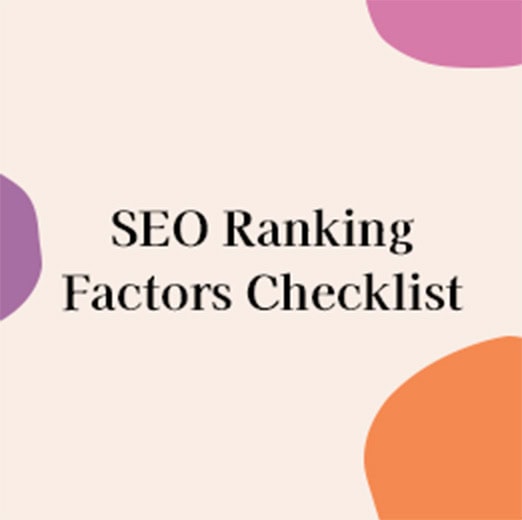Shopify and SEO: A Perfect Pairing for Busy Entrepreneurs
Not long ago, I sat down for a virtual chat with Kirsten, a fashion entrepreneur and busy mom of two young boys. Like many Shopify store owners, she juggles family life while running her business, always seeking ways to grow her online presence without sacrificing time with her kids.
During our talk, she confided that while she had built a beautiful Shopify site, traffic was slow and sales were inconsistent. That’s when we had a pivotal conversation: small, strategic changes to optimize her Shopify SEO could drive more organic traffic, increase visibility, and ultimately boost sales.
If you’ve ever found yourself in Kirsten’s shoes—overwhelmed but determined—this guide is for you. In this article, we'll break down how to optimize your Shopify store for search engines using strategies grounded in experience and designed for real results.
TL;DR
- Shopify SEO helps your store rank higher in search engines by optimizing page titles, meta descriptions, image alt text, and content with relevant keywords your customers are already searching for.
- Consistent blogging and keyword research drive long-term traffic by aligning your content strategy with how people discover products and brands through search.
- Technical SEO audits identify site issues that limit visibility, ensuring your Shopify site loads fast, has clean structure, and is easy for Google to crawl and index.
Why Shopify is SEO-Friendly (When Used Right)
Shopify offers a user-friendly platform that seamlessly integrates in-store and online inventories, simplifying management for business owners. Its built-in tools and apps make it a go-to solution for fashion entrepreneurs looking to streamline operations. However, merely setting up an online store isn't enough. The most common mistake I see? Business owners delay SEO setup—sometimes for months after launch, thinking design alone will bring traffic.
A strategic Shopify SEO plan is what bridges the gap between a visually stunning site and one that actually drives traffic and sales. At Chase Your Dreams Consulting, I emphasize the importance of aligning SEO with your business model, customer journey, and product mix. Your store architecture, navigation, and URL structure should all be intentionally optimized to guide both users and search engines. This helps to support key SEO features like crawlability, indexability, and internal linking.
Delaying SEO can result in missed opportunities, especially for entrepreneurs juggling multiple responsibilities. Whether you're a solo founder or leading a small team, optimizing your store early lays a foundation that compounds over time. A strong SEO for Shopify strategy ensures that your collections and products are indexed properly, your pages load quickly, and your store builds authority in a competitive market.
This is where foundational SEO tactics like setting up keyword-rich collection pages, optimizing your metadata, and structuring internal links come into play. These are the exact strategies outlined in my comprehensive post on Fashion SEO Strategy, where I break down the core components of fashion-specific SEO success.
Common Mistakes to Avoid:
- Relying solely on paid ads. Ads are not here to save your business, they’re here to scale it.
- Ignoring metadata such as title tags, meta descriptions and alt text. They are the foundation and building blocks of on-page SEO.
- Launching without keyword-rich content. This isn't just a "nice to have" but necessary for search intent and how people find information.
- Failing to structure site navigation for SEO.
- Using generic collection names like "New Arrivals" with no supporting keywords.
Learn more about building your SEO foundation: Fashion SEO Strategy
The Importance of Consistent, High-Quality Content
Blogging with Purpose: Build Trust and Drive Traffic
Regularly publishing original content builds trust and drives traffic. During our complimentary consultation, Kirsten and I discussed her existing blog, which features interviews with inspiring women, aligns perfectly with her brand and target audience. It’s a beautiful representation of her brand voice and ideal audience—busy, stylish women looking for relatable and empowering content.
I emphasized the importance of maintaining consistency in her blogging efforts and how regularly updated, high-quality content can improve SEO on her Shopify website. Google's most recent updates favor relevant, human-first content, which means storytelling that’s honest and aligned with a brand’s values is more important than ever.
Our conversation also touched on how Google's new AI-driven search tools personalize results, rewarding content that genuinely helps users. I advised Kirsten to approach blogging with a structured strategy: define clear audience personas, conduct keyword research for each topic, and maintain a publishing schedule that feels sustainable.
Kirsten expressed excitement about dedicating more time to this now that her older child is starting school. By aligning her blog strategy with SEO best practices and Shopify SEO principles, we’re setting the stage for long-term organic growth.
Get started with strategic content by approaching your blog like a curated customer experience. Begin by reviewing your customer persona and exploring the types of content that provide both value and entertainment. Instead of rushing to publish for the sake of having content, take time to research your audience’s interests, plan your posts around keywords with clear search intent, and aim to educate, inspire, or solve a problem.
Think of your blog as part of your sales funnel—an opportunity to build brand awareness and trust in a "non-salesy" way. Fashion e-commerce blogs that resonate tend to include styling tips, customer stories, product care guides, and behind-the-scenes insights.
To stand out:
- Create long-form blog posts that are visually appealing, skimmable, and structured with H2/H3 headings.
- Optimize each post for SEO by including a primary keyword, alt text for images, title tags and meta descriptions that encourage clicks.
- Link internally to product pages, related
The payoff? Increased visibility, more qualified traffic, and a brand narrative that keeps your customers coming back.
Read more:
Smart Shopify SEO Starts with Keyword Research and Structure
Finding the Words Your Customers Are Already Searching For
Effective keyword research is foundational to Shopify SEO success. One of the first things I help clients do is uncover what their target audience is actually searching for. By identifying specific, relevant keywords and incorporating them into your Shopify store’s structure—site architecture, product descriptions, collection pages, and blog content—you help search engines understand and rank your site more effectively.
For example, adding descriptive, keyword-optimized text blocks to collection pages can increase on-page word count and improve your store’s visibility in search results. Instead of generic labels, use terms that align with the language your customers use. Keyword research also provides insights into buyer intent, helping you create content that resonates with shoppers whether they’re browsing for ideas or ready to buy.
To dive deeper, start with seed keywords like “women’s fashion” or “sustainable clothing,” then build out long-tail variations such as “organic cotton summer dress” or “plus size eco-friendly swimwear.” These more specific phrases reflect a higher level of search intent, making it easier to attract shoppers who are further along in their buying journey.
Analyzing your competitors is another effective tactic. Use SEO tools like SEMrush or Ahrefs to uncover which keywords are driving traffic to similar fashion brands. These insights not only show what’s working for others but can also help you discover gaps and SEO issues in your own keyword strategy.
Understanding search intent is crucial. Determine whether your target keyword reflects an informational, navigational, transactional, or commercial investigation search. For example, someone searching “how to style linen pants” is likely looking for content, whereas “buy linen pants online” indicates a shopping intent.
Next, map keywords to specific pages of your website to avoid cannibalization and strengthen SEO signals. Each product category, collection, and blog post should target a distinct keyword or keyword cluster that aligns with the page’s content and purpose.
Stay flexible—keyword trends evolve. Use SEO tools like Google Trends or social listening to identify new keyword opportunities based on seasonality or shifting fashion interests. And don’t forget to localize your keywords if you also have a brick-and-mortar presence.
For a detailed breakdown, visit:
On-Page SEO for Shopify: Don’t Overlook Your Images
Naming and Describing Images to Improve SEO on Shopify
Properly naming and describing images is crucial for product discovery. In fashion e-commerce, your product images aren’t just visual assets—they’re SEO opportunities to help you optimize your Shopify site. Renaming image files with descriptive, keyword-rich phrases helps search engines understand what each image represents. For example, instead of using a default file name like "IMG1234.jpg," you should rename it to something like "cotton-summer-dress.jpg."
Adding descriptive alt text further improves accessibility and enhances search rankings. Alt text not only supports visually impaired users but also contributes to how your images appear in Google Image Search, which can drive additional traffic to your Shopify store.
Remember to include target keywords naturally and keep the descriptions concise but specific. To go further, compress your images using tools like TinyPNG or Squoosh to maintain site speed—an essential SEO ranking factor. Use modern formats like WebP for faster loading times, and implement lazy loading to improve the mobile user experience by only loading images when they appear on-screen.
These small technical tweaks can greatly impact your Shopify SEO performance. Additionally, treat your image optimization as part of a larger on-page SEO strategy. Include keyword-rich captions when appropriate and consider linking images to related content or product pages to enhance internal linking. All of this supports a more cohesive and search-friendly website.
Explore more image optimization tips:
Technical SEO for Shopify and the Power of a Site Audit
What a Site Audit Really Tells You (and Why It Matters)
Conducting a comprehensive site audit involves analyzing technical aspects, search engine rankings, and content quality. This process helps identify areas for improvement and prioritize actions to optimize website performance. Understanding current organic traffic and keyword rankings establishes a baseline for measuring progress.
During my consultation with Kirsten, we explored how her site audit would evaluate everything from page speed and mobile usability to indexing issues and duplicate content. We discussed how small technical issues—like broken links or missing title tags and meta tags—can quietly undermine her visibility in search engines. Making sure that basic SEO elements are implemented onto her site will significantly improve her Shopify site's visibility.
A well-executed audit not only reveals what’s broken, but also surfaces missed opportunities: under-optimized product descriptions, orphaned pages, and thin content that doesn’t meet today’s SEO standards. With a clear picture of her site’s health, Kirsten can now make data-driven decisions that align with her business goals.
For Shopify store owners, regular audits should become a habit—not a one-off fix. To unlock the full potential of your Shopify store, site audits are the starting point for long-term success and essential for adapting to algorithm updates, new product launches, and shifting customer behavior. Use tools like Google Search Console to monitor your Shopify site's search traffic and performance to understand the impacts of your optimization strategy.
Explore related resources:
The Human Side of SEO: Empathy, Strategy, and Long-Term Success
Recognizing the real-life pressures entrepreneurs face is essential. With a background in fashion and entrepreneurship, I offer tailored strategies that address both technical and personal aspects of SEO, ensuring long-term success.
SEO is not just about algorithms; it's about connecting with your audience, understanding their needs, and providing solutions. By aligning your Shopify SEO efforts with your brand's mission and values, you can build lasting relationships with your customers.
For more on aligning SEO with your brand strategy, explore my article on Fashion SEO Strategy.
From Overwhelmed to Optimized: The Benefit of Improving SEO on Shopify
Implementing these SEO practices and strategies can transform your Shopify store's online presence. Starting with manageable steps and gradually building upon them leads to significant improvements.
If you're feeling stuck on SEO for Shopify, consider reaching out for a consultation to develop a customized plan for your online store’s success.




